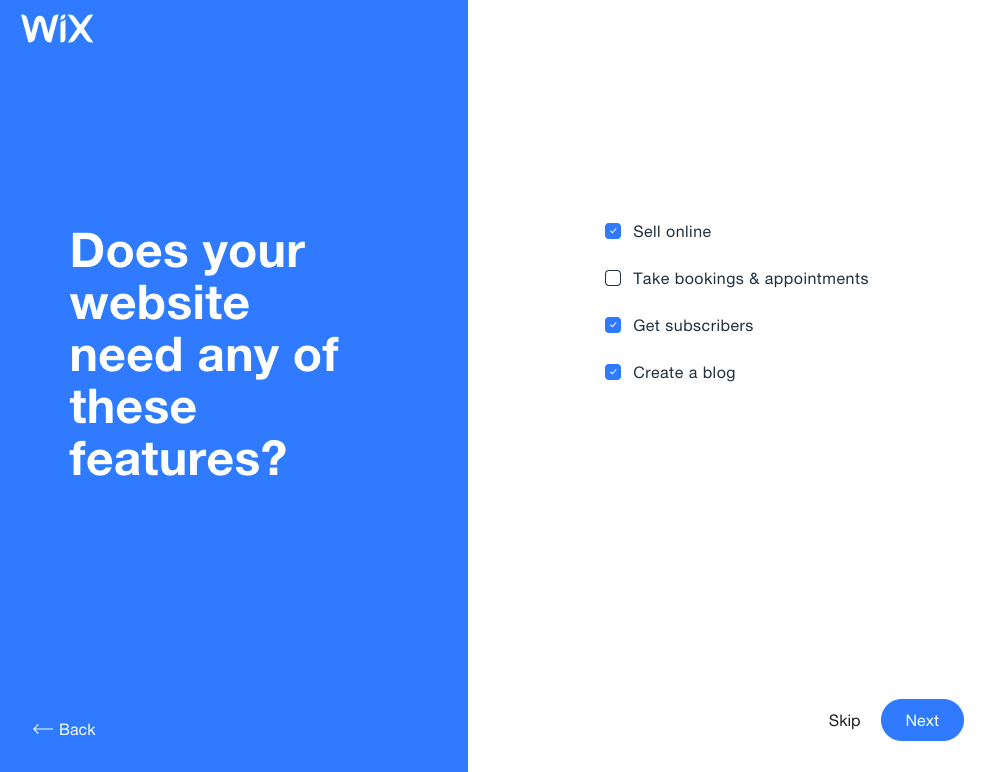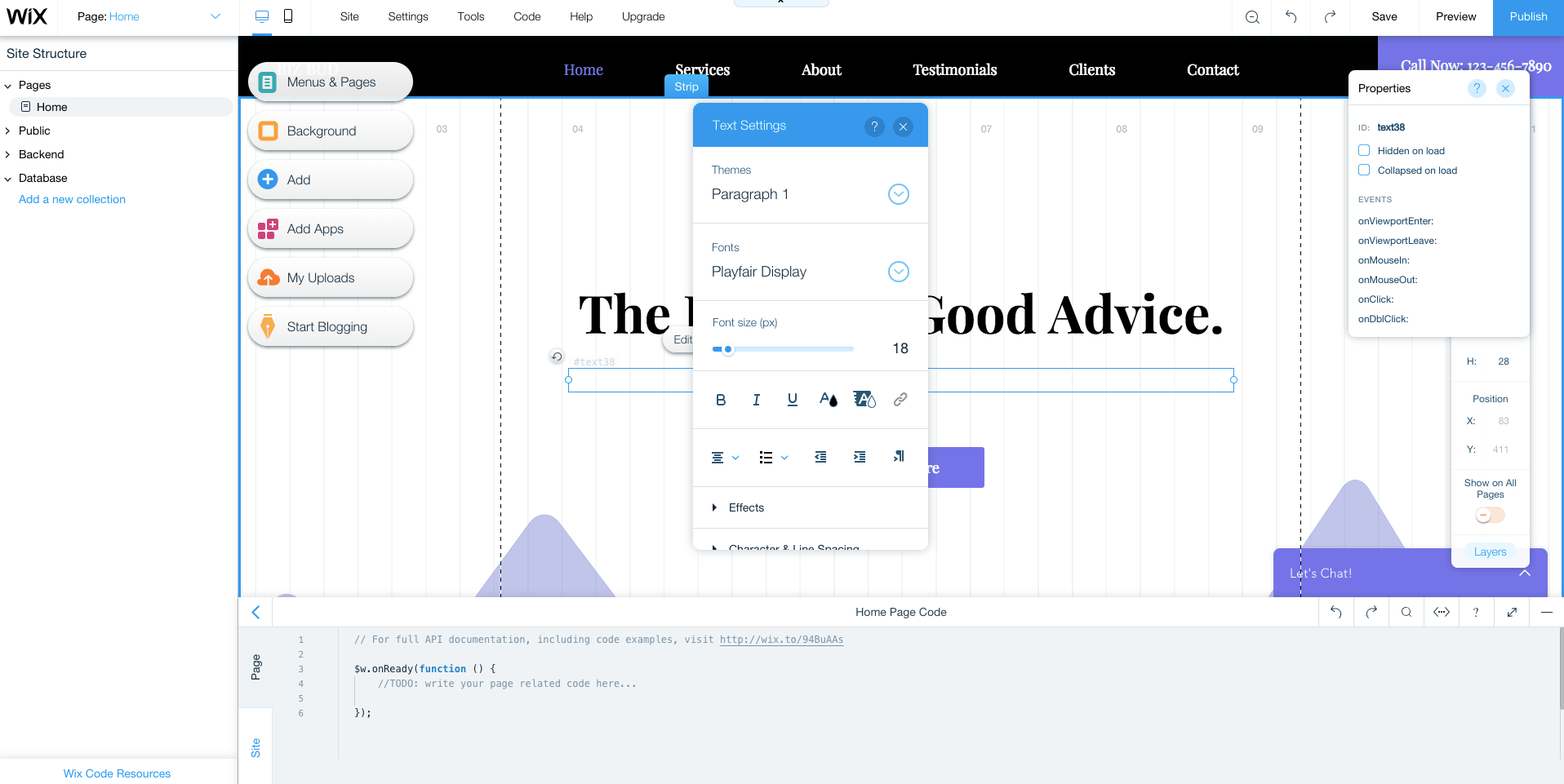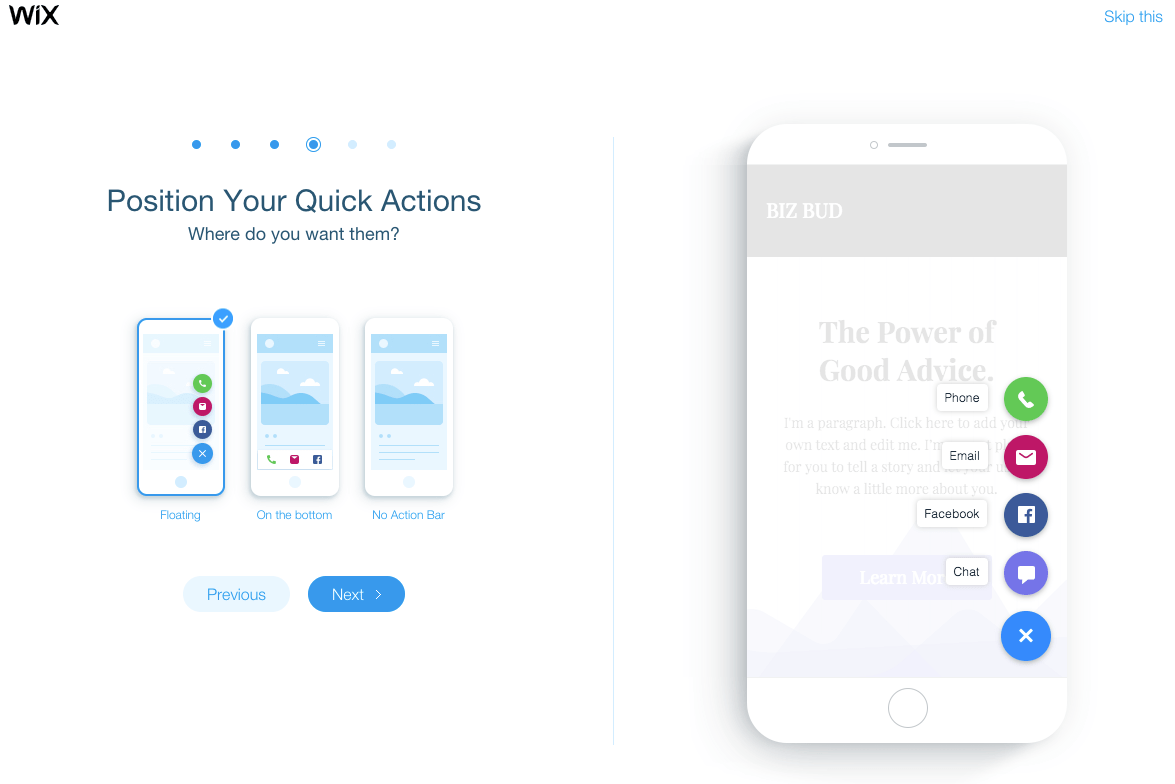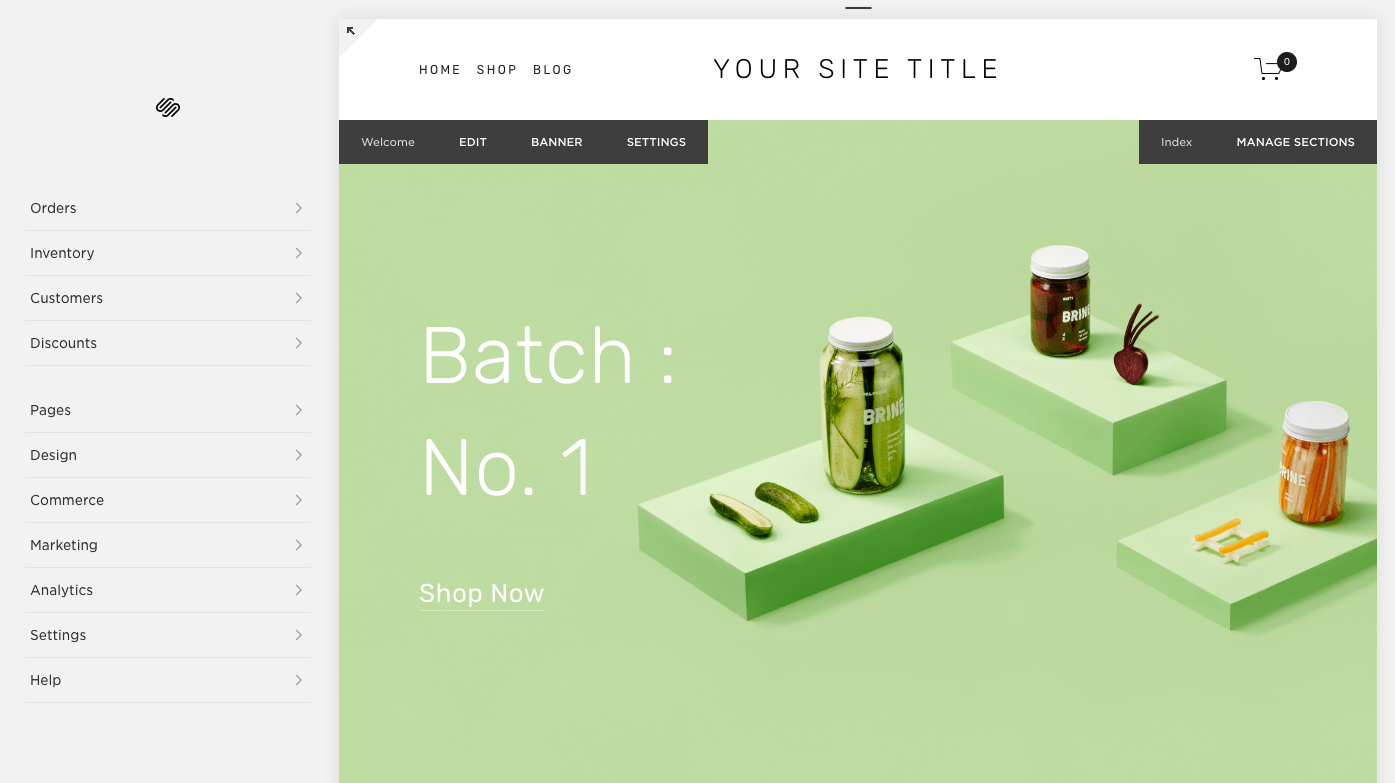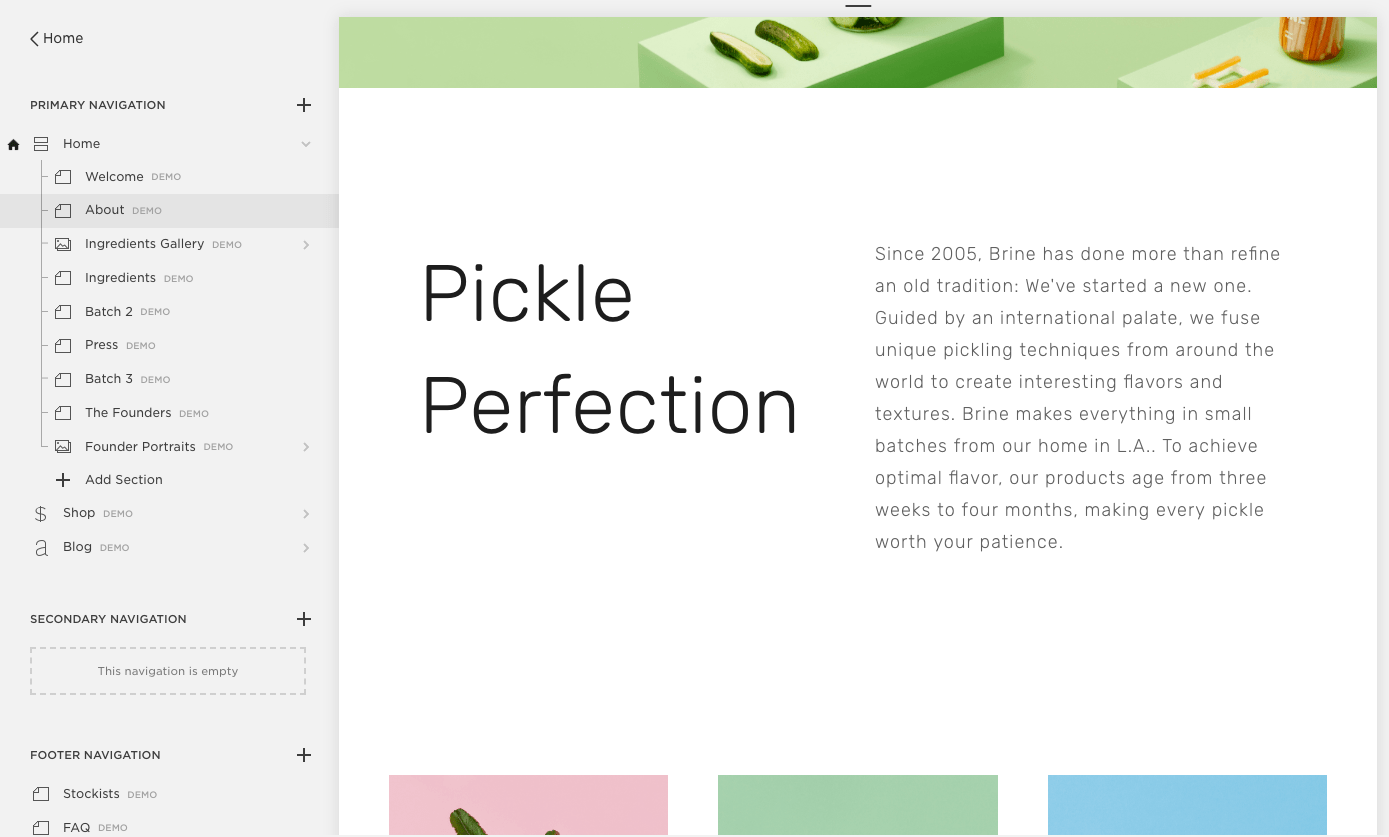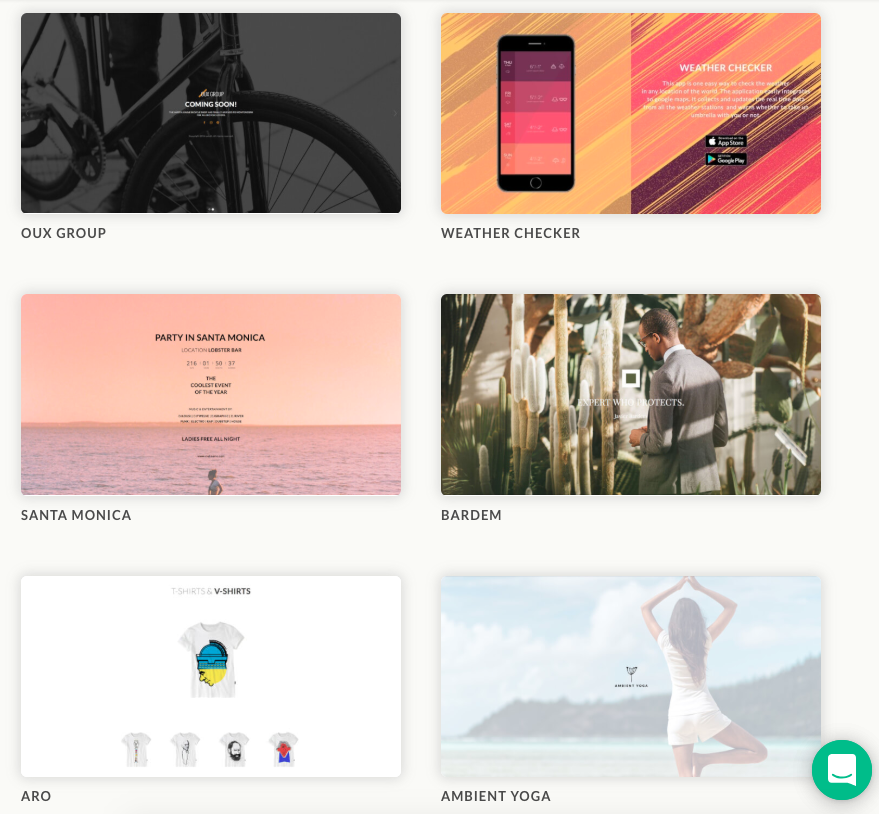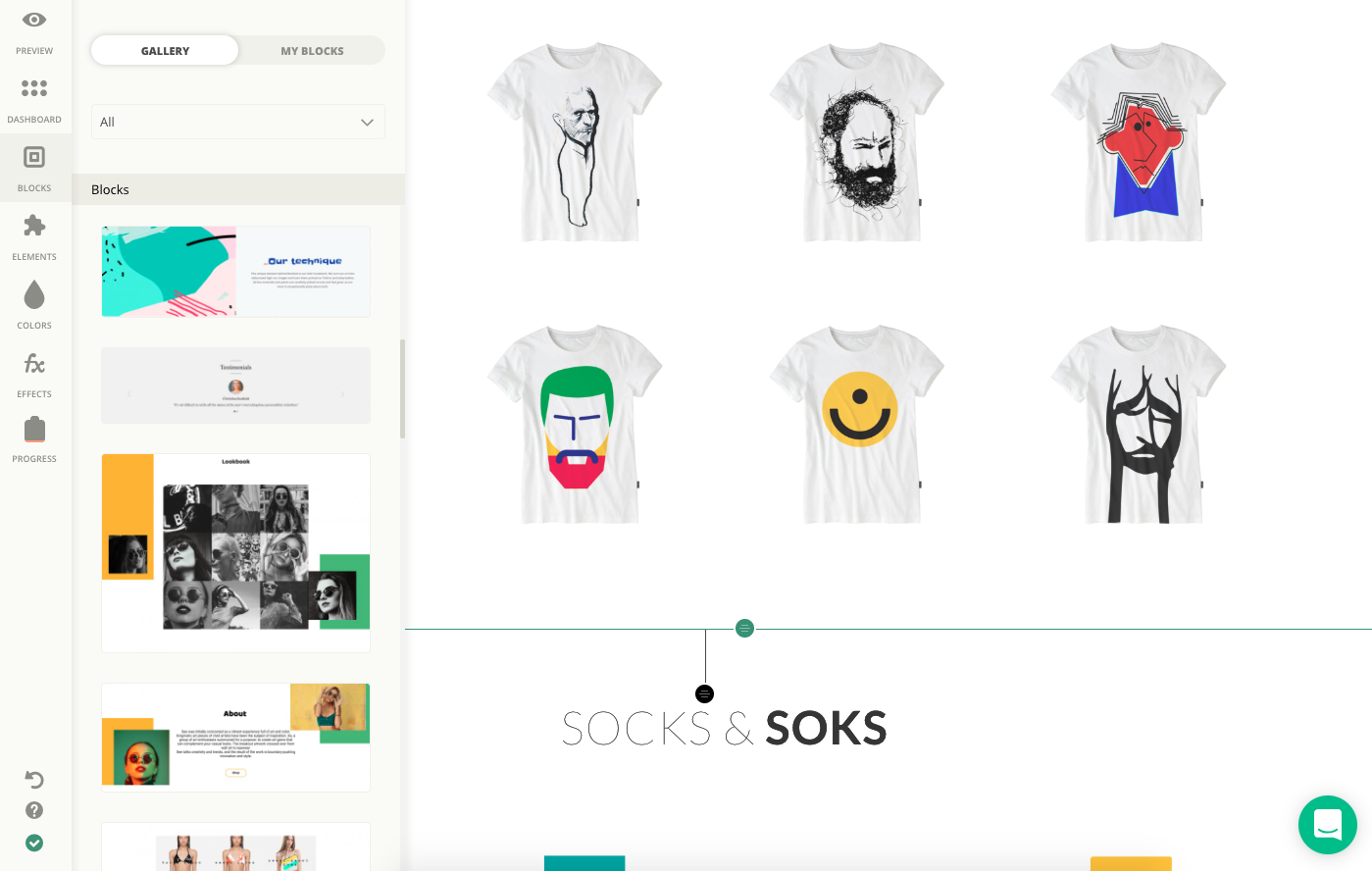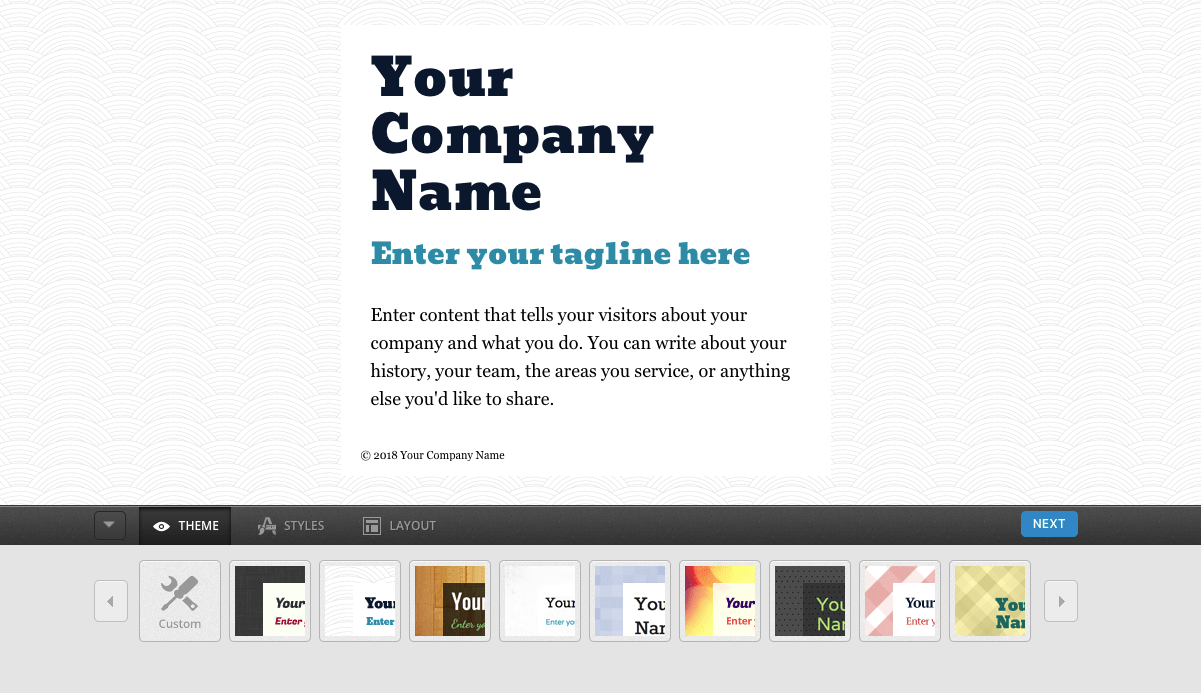Cryptocurrencies have been a hot topic lately to say the least.
You probably heard about Bitcoin years ago—the most popular cryptocurrency with the most media coverage. In the early days, it was primarily used for transactions on the dark web.
But today, cryptocurrencies have evolved and are starting to gain traction.
Everyone knows someone with a cryptocurrency story. Either a friend, family member, or a friend of a friend invested in Bitcoin years ago and made a fortune off it.
Or maybe you’ve talked to someone who regrets selling too early before some of the most recent surges took place.
That said, I didn’t create this guide to spark a cryptocurrency debate. Everyone has an opinion on this method of payment, and I don’t want to get into all the pros and cons.
Instead, I want to focus on one specific area that makes this technology work.
Blockchain.
On the surface level, people associate blockchain with buying and selling cryptocurrencies, but it’s much more than that.
As a marketer, you need to recognize the latest trends and understand how blockchain technology works.
It will potentially impact your business today and in the future. It’s in your best interest to start educating yourself now.
Even if you’re not planning to implement cryptocurrency as a payment method just yet, knowing the concepts of blockchain is still important because it’s changing the digital marketing industry.
Here’s what you need to know.
What is blockchain?
Let’s start with the basics.
Blockchain technology can be compared to a shared ledger or an open record system.
These records are used to keep track of different transactions. There are multiple uses for the records on file.
As I said before, cryptocurrency is what comes to mind first. But blockchain can also be used to keep track of data such as home records, voting records, and medical information.
Each transaction is segmented by blocks, hence the name.
These blocks get verified by other users within the system. Blocks cannot be changed once they are verified.
The permanent blocks become added to a chain of other blocks that have already been validated as well.
It may sound a bit confusing, but here’s a great visual representation of the way blockchain works:
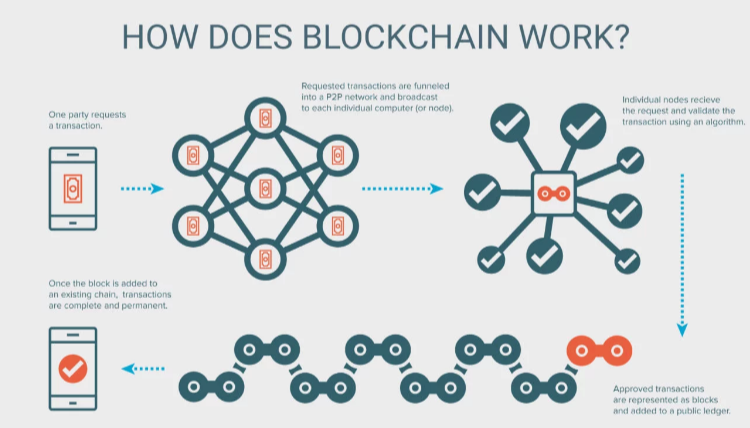
Right now, people are constantly buying and selling goods on the web. You might be one of those people.
But let’s look at third-party marketplace websites such as eBay.
Marketplaces turn a profit by charging buyers and sellers fees to use their platforms. If you buy something on eBay, the platform will use your bank and the seller’s bank to verify the transaction.
They will also confirm that the buyer and product actually exist.
Blockchain technology allows buyers and sellers to cut out these middlemen. This makes it possible to process transactions without the need of a third-party marketplace.
There won’t be any banks involved or transaction fees associated with the purchase either. Neither party will have to worry about exchange rates, even for international purchases.
It’s supposed to be a safe and fast way to make transactions. Blockchain is the backbone behind peer-to-peer electronic payments.
The first blockchain was created when the first cryptocurrency was created.
The software is open-source, allowing anyone to see the coding and make modifications to it. Next, different people and companies came out with different versions of blockchain without using the original coding.
Any user can see transactions made with blockchain.
They are visible to everyone, even when completed between two people. While the blockchains are visible to anyone, the identities of the users can remain anonymous:
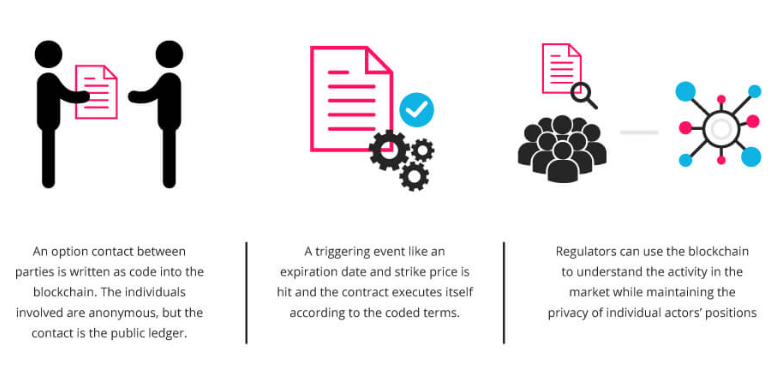
Instead of having a name, each user in the system has a public address.
Algorithms can be written to automate the transactions. This is similar to the way you pay a Spotify subscription each month with your credit card.
Now that you understand the basics of how blockchain works, I’ll show you how this technology is being used to revolutionize the digital marketing industry.
Middlemen in digital marketing can be eliminated
Blockchain technology makes it possible for advertisers to avoid middlemen.
Right now, marketers go through third parties to handle their advertisements.
Let’s go through an example.
Let’s say a company wants to offer banner advertisements on its website. But it doesn’t want to sell its ad space to just anyone.
Ads linking to low authority or sketchy businesses won’t add credibility to your website.
How does this company proceed? It goes through a platform such as Google. In this case, Google will act as the middleman.
By participating in Google Adsense, the company is assured that it will be connected only with credible businesses that want to buy advertising space.
This process makes both parties feel secure about the ads.
The site selling the space knows it won’t have any malicious content from unreputable brands being displayed on its pages. Furthermore, the company buying the advertisement knows that its ads will be run on legitimate sites.
Google processes the transaction and charges a fee for its part in the deal.
That’s the current system that marketers are using without blockchain technology:
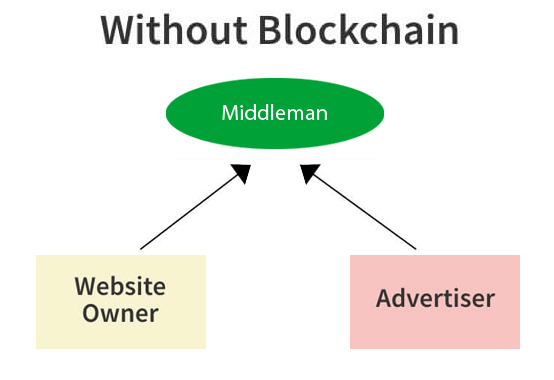
Now, let’s apply the blockchain concepts to this example.
Companies won’t have the need to go through a third-party platform such as Google with the blockchain structure.
That’s because blockchain users can be verified through its networks. People would know they’re getting what they’re paying for as opposed to potentially paying for clicks that aren’t genuine.
It’s still a safe and secure way to process each transaction.
Blockchain, ultimately, eliminates the need for intermediaries in the procedure:
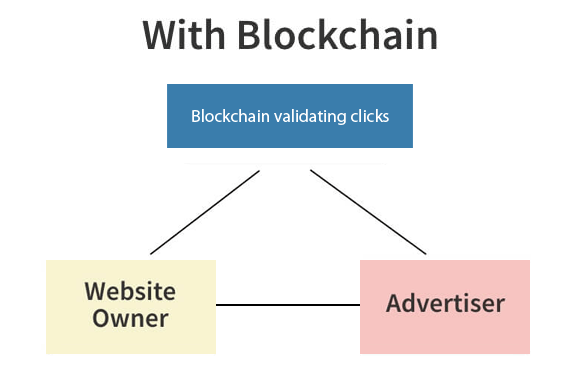
Don’t get me wrong.
Google and its advertising platform aren’t going anywhere just yet. That’s not what I’m saying. It’s still arguably the biggest powerhouse in the marketing industry.
I’m not telling you to ditch your Google AdSense strategy either.
All I’m saying is the concepts behind blockchain technology will make it possible for companies to avoid these types of third-party platforms.
Ditching the middleman will make advertisements more profitable since marketers won’t have to pay additional fees for the transactions.
Consumers can control content
As a marketer, you don’t want to hear this, but consumers don’t want to see ads all the time.
That’s why ad blocking penetration continues to rise each year in the United States:
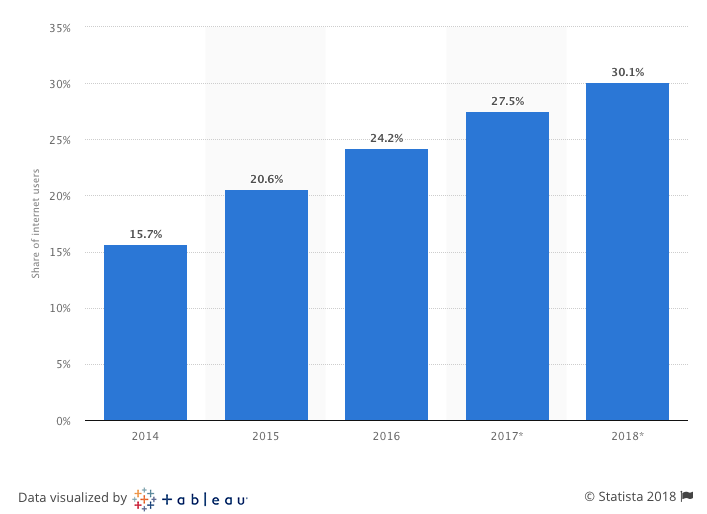
People have different reasons for using ad blockers.
According to a recent study, 51% of people justify their use of ad blockers because it’s their Internet experience and they want to be in complete control of it.
Other top results from the survey include convenience and wanting on-demand content without waiting for an ad to load.
In some instances, it seems ads have grown out of control. But that’s the nature of the modern digital world.
Ad targeting has become much better with new technology. The ability, for example, to use lifetime value to create Facebook audiences that convert makes it much easier for businesses to reach their target markets.
Sometimes when a customer makes a transaction or gives out their information to one party, they receive advertisements even when they never opted in to it.
Blockchain technology can give consumers the right to charge companies for their contact information.
If a company wants a consumer to subscribe to their newsletter, the customer can reply with their price to receive that content.
For example, each consumer who reads an email could cost brands fractions of a cent. Transactions would be processed through cryptocurrencies automatically.
This concept gives consumers complete control over who has their information.
It will also make it more challenging for marketers to showcase their relevance and level of importance to the consumer. Brands will need to learn how to create a highly effective value proposition in these instances.
Transparency and accountability will build trust
It’s not always easy for brands to gain the trust of their consumers. This is especially true for smaller, less-known businesses.
With so much information out there, people have become skeptical about what they’re being told and which brands are telling the truth.
People want answers.
They want to know where their food is coming from.
They want to make sure their clothes are coming from factories with appropriate working conditions for the employees.
Trust has a major impact on purchasing decisions:

Blockchain will force businesses to become more transparent about their operations.
That’s because every step and record can be verified and documented for everyone to see on these open source networks.
Consumers can have complete access to the supply chain of a retailer or distributor.
This type of information will show everyone exactly how and where their products are being manufactured. Each step of the process is tracked with blockchain.
Since this information will become public record, companies will be held more accountable for their actions.
They can’t claim their goods were manufactured in a factory with good health conditions if that’s not true. Otherwise, it won’t be verified in the blockchain.
Do you think this sounds crazy? Too good to be true?
Think again. Companies have already started doing this.
I recently read a case study on this subject conducted with IBM and Walmart. It covers the supply chain process with blockchain technology:
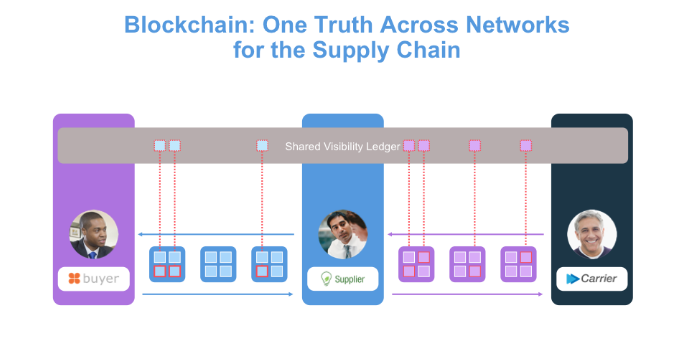
Technology was used to track where the products were coming from.
In this case, it was tracking food. The idea was to trace the source and supply chain of pork products through each step of the supply chain.
It started all the way back in China—the world’s largest pork producer.
Blockchain holds companies accountable and builds trust between the brand and their customers. This is a brand’s way of showing everyone it has nothing to hide.
With blockchain technology, the public can see digital contracts between two parties.
This forces everyone involved to keep up their end of the deal.
Security must be a priority
With this technology becoming part of our lives fast, businesses need to prioritize security more than ever.
Don’t get me wrong, businesses always needed to emphasize website security and protecting customer information.
However, since blockchain can be used to process transactions, malicious advertisements could potentially become an issue.
People are already concerned about malicious malware and viruses when it comes to their privacy and ads:

As a result of these concerns, we should see a growth in the fraud verification industry.
They will implement blockchain technology.
The verifications required to add blocks in this system can prevent criminals and bots from stealing precious information.
Businesses will accept more alternative payment methods
Right now, you probably can’t walk into your local coffee shop and buy something with Bitcoin or another cryptocurrency.
But we may not be too far from those days.
Some companies are already preparing to adapt to alternative payment types:
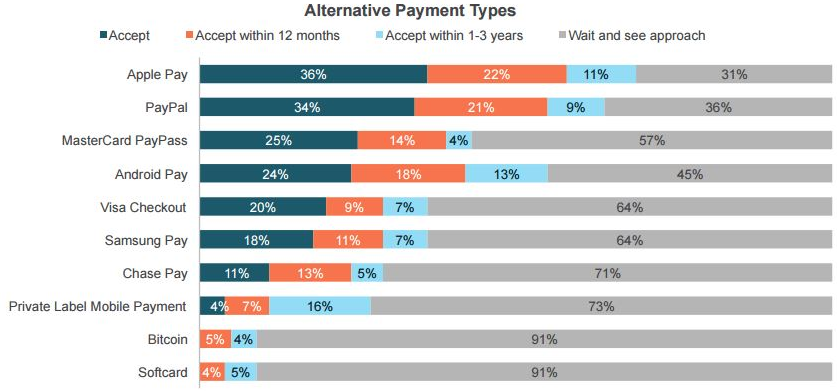
Only about 9% of businesses plan to accept Bitcoin within the next three years.
We’re still not at the point where it has penetrated the mass consumer market. But this could be approaching us faster than you might think.
Blockchain technology is making this possible.
As a business owner, you need to recognize this and at least prepare yourself to adapt when these types of payments gain more traction at the mass consumer level.
Conclusion
Blockchain is almost always associated with processing cryptocurrency payments.
However, this technology can be used for much more than that. Its applications have the ability to change the digital marketing world as we know it.
Blockchain gives marketers the ability to cut out middlemen when buying or selling advertisements, such as a PPC campaign.
Consumers will have more control over which companies can send them information.
Since blockchain transactions are an open ledger for anyone to see, businesses will be held accountable for their actions and forced to be more transparent.
Your business might not be ready to accept cryptocurrency just yet, and I’m not saying it should be. But it should keep an eye on this emerging trend in the coming years.
How is your company preparing for digital marketing changes associated with blockchain technology?

Source Quick Sprout https://ift.tt/2FJdTAY


